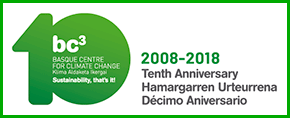
Photo: Livestock rearing replacing natural forest (Credit: Esteban Capella)
In 2006, the Argentine government promulgated a National Law aiming at protecting the remaining native forests, and the livelihoods of indigenous groups and campesinos’ communities, whose livelihoods are threatened by the expansion of the agricultural frontier (Law 26.331). This law ordered to each province to produce its own provincial law, following a participatory process where all relevant stakeholders had to be involved. Provincial laws had to produce a map showing three different zones with high, medium, or low conservation value, and a description of the activities to be carried out in each zone, had to be carefully described. Also, a Payment for Ecosystem Services scheme was put into place to compensate those who complied with the conservation measures ordered by the provincial law. In the Province of Córdoba, the Provincial Law for the Protection of Native Forests was approved in 2010 (Law 9814 – hereafter Forest Law). The case study we are presenting analyses the discussions, negotiations, alliances, and power struggles that surrounded the promulgation of the Forest Law in that province. It will show which the main confronting groups were, the interests they were aligned with, the narratives they defended, and the main strategies deployed by each group.
The case study is located in the North and West of the Province of Córdoba (Argentina). From a phytogeographic point of view, this is the southernmost end of the Chaco Region. During the last decades, the native-dry forest has been progressively replaced by annual crops (e.g., soy and maize) and intensive and semi-intensive livestock rearing. This is affecting both native ecosystems and the livelihood of the local communities that make their livelihood out of them. This is causing not only processes of rapid land-use change, but also is triggering a series of social-environmental conflicts.
To know more:
Cabrol D and D.M. Cáceres. 2017. Las disputas por los bienes comunes y su impacto en la apropiación de servicios ecosistémicos. La Ley de Protección de Bosques Nativos, en la Provincia de Córdoba, Argentina. Ecología Austral, 27(1), 134-145.
Cáceres D.M., F. Silvetti and S. Díaz. 2016. The rocky path from policy-relevant science to policy implementation – a case study from the South American Chaco Current Opinion in Environmental Sustainability, 19, 57-66.
Cáceres D.M. 2015. Accumulation by Dispossession and Socio–Environmental Conflicts Caused by the Expansion of Agribusiness in Argentina. Journal of Agrarian Change, 15(1), 116-147.
Cáceres D.M., E. Tapella, F. Quétier and S. Díaz. 2015. The social value of biodiversity and ecosystem services from the perspectives of different social actors. Ecology and Society, 20(1), 62.
Conti G. and S. Díaz. 2013. Plant functional diversity and carbon storage – an empirical test in semi-arid forest ecosystems. Journal of Ecology 101(1), 18-28.
Silvetti F, Soto G, Cáceres D.M. and D Cabrol. 2012. ¿Por qué la Legislación no Protege a los Bosques Nativos de Argentina? Conflictos Socioambientales y Políticas Públicas en la Provincia de Córdoba. Mundo Agrario, 25.
Tapella, E. 2012. Heterogeneidad social y valoración diferencial de servicios ecosistémicos. Un abordaje multi-actoral en el Oeste de Córdoba (Argentina). PhD Thesis. Universidad Nacional de Córdoba, Córdoba, Argentina.



